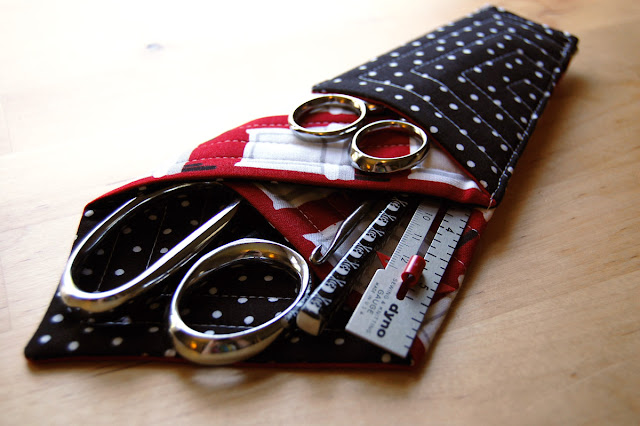300+ Years of Color Theory: Theory of Colours
This book is included in a reading list on the history of Color Theory. Find the homepage for the series here.
Johann Wolfgang von Goethe was a German author, most famous for his poetry and epic drama, Faust. He also published scientific articles and books such as The Metamorphosis of Plants, and this volume on color.
Goethe was familiar with Newton’s book Opticks, both conducting some of the same experiments with sunlight and prisms. Newton asked the question why do these colors appear, and answered using the scientific method with the discovery of the visual spectrum of light. Goethe asks instead how do these colors arise, and answers with a very psychological approach based on his own observations.
Edited note (1/27/2022): It's taken me years of re-reading and studying Goethe's book to really understand his point of view. His painstaking and often poetic observations of human color perception were spot-on, and remain some of the best descriptions of visual phenomenon to date. His Aristotelian ideas about the origin of color weren't scientifically correct (and in direct opposition to Newton's theories), but they were extremely romantic ideas - and some people still follow his line of thinking to this day. Goethe was a true Romantic, and I've got to give him credit for sticking to his ideals where the origin of colors is concerned.
As mentioned in the last post, most 18th and early 19th Century Color Theorists didn’t fully understand Newton’s ideas based on the system of colored light. Goethe was pretty sure that Newton had got it wrong when he said,
“Along with the rest of the world I was convinced that all the colors are contained in the light; no one had ever told me anything different, and I had never found the least cause to doubt it, because I had no further interest in the subject.
But how I was astonished, as I looked at a white wall through the prism, that it stayed white! That only where it came upon some darkened area, it showed some color, then at last, around the window sill all the colors shone... It didn't take long before I knew here was something significant about color to be brought forth, and I spoke as through an instinct out loud, that the Newtonian teachings were false.”
Throughout Theory of Colours, Goethe doesn’t hesitate to hurl more insults at Newton:
“A great mathematician was possessed with an entirely false notion on the physical origins of color; yet, owing to his great authority as a geometer, the mistakes which he committed as an experimentalist long became sanctioned in the eyes of a world ever fettered in prejudices.”
“Go ahead, split the light! You try to separate, as you often have, that which is one and remains one in spite of you.”
This just begs for someone to pit Newton against Goethe in an Epic RapBattle of History!
Besides the mentions of Newton’s theories, it is also evident that Goethe was aware of The Natural System ofColors by Moses Harris. Goethe makes direct reference to Harris’ system as being correct for painters (more about this below).
This book was definitely influential to 19th century artists, most notably the English landscape painter J. M. W. Turner who scribbled notations throughout his own copy of Thoery of Colours, and clearly put these theories to good use on canvas.
Approach:
Goethe’s approach to Color Theory is completely unique. His ideas begin with an age-old and mystic view of the appearance of color from the Greeks, mixed with his own perceptions and observations.
The Greek philosopher Aristotle believed colors emerge out of the struggle between light and darkness.
When ancient Greeks looked upward at the night sky, they saw darkness before the light of day. At sunrise, the sky begins to move through a whole series of colors; from deep blues to purples, reds, oranges and finally bright yellow of the sun in a bright blue sky. In Aristotle’s Color Theory, just as the colors in the skies appear between the darkness of night and the light of day, all the colors we perceive emerge from light and dark.
With this idea in mind, Goethe also uses his personal observations to build his particular brand of Color Theory.
Have you ever looked through a prism before? Try it - It’s a little like looking through a time machine, you’ll see some of the same things both Newton and Goethe did hundreds of years ago!
Below are two of Goethe’s basic experiments. Grab a prism, some paper, and a black marker to see for yourself.
Draw a black square on a sheet of white paper. Then add several black bars that grow closer and closer together under the square.
Look at the black square through a prism. See exactly what Goethe saw; a bright cyan blue band appears at one end of the square, turning to a deep purple as it touches the black. At the other end, a yellow band appears, moving towards red as it touches the black.
Look at the black lines, and where the lines move closer together you can see other colors appear (as the yellow at the top of one black line mix with the blue at the bottom of the other). Goethe surmises, just as the ancient Greeks, that all colors arise from darkness and light.
Color Wheel:
Goethe’s color wheel arises from only two basic colors; blue and yellow. These are the same bright blue and yellow seen when looking through a prism in the experiments above, or at the sun in a clear blue sky. In his wheel, cyan blue and yellow meet at the bottom to form green. Moving to the top of the wheel, cyan blue deepens to form dark blue and purple, while yellow deepens to create orange and red. Red and purple meet at the top of the wheel to form magenta.
Goethe notes that “Hence the painter is justified in assuming that there are three primitive colors from which he combines all others. The natural philosopher, on the other hand, assumes only two elementary colors, from which he, in like manner, develops and combines the rest.”
Goethe’s Laws of Color Harmonies:
Goethe established basic laws of harmony of colors, all of which are still considered standard color compositions in today’s color wheels.
Harris called colors across from each other on a color wheel with special properties color opposites. Goethe calls these color combinations the completeness of color, which as you’ve probably guessed, has become our modern day theory of complementary colors.
Using the same experiments that Harris writes about in his book, Goethe explains the sensation of Successive and Simultaneous contrast in human vision. Based on these phenomena, he theorizes that when the human eye sees one individual color, it seeks balance by producing the complemental hue from the color wheel. The eyes cannot be said to be adversely affected by viewing one singular color according to Goethe, because:
“We now observe that the demand for completeness, which is inherent in the organ, frees us from this restraint: the eye relieves itself by producing the opposite of the single color forced upon it, and thus attains the entire impression which is so satisfactory to it.”
These color combinations are purely harmonious and will always carry the conditions of completeness with them. Just draw a line through the center of the color wheel, and the two ends will point directly to a pair of complements, such as red/green or purple/yellow.
Characteristic Combinations:
These are combinations Goethe describes as chords. Not quite as harmonious as complementary combinations, but they do have some merit. These colors live on his color wheel one color space apart from each other, such as red/blue, or blue/yellow.
Non-characteristic Combinations:
These are combinations using colors right next to each other around the wheel, you may be better acquainted with this combination as Analogous. Goethe makes note that although these combinations are too much alike to fulfill the balance of complementary colors, they do represent a progressive state, and may “produce no unpleasant effect," such as green/yellow or red/orange.
So, from Newton’s first color wheel and Harris’ first subtractive wheel and mention of color opposites, Goethe’s theories further the established color harmonies of Complementary, Analogous, and color combinations picked at regular intervals from around the wheel.
If you are interested, this book is an easy read, and is still in print if you’d like a new or used copy of your own. You may be able to find a free online copy through Google Books if you look. You can also find a free audiobook version here, not the best reading – but understandable and free!














Comments